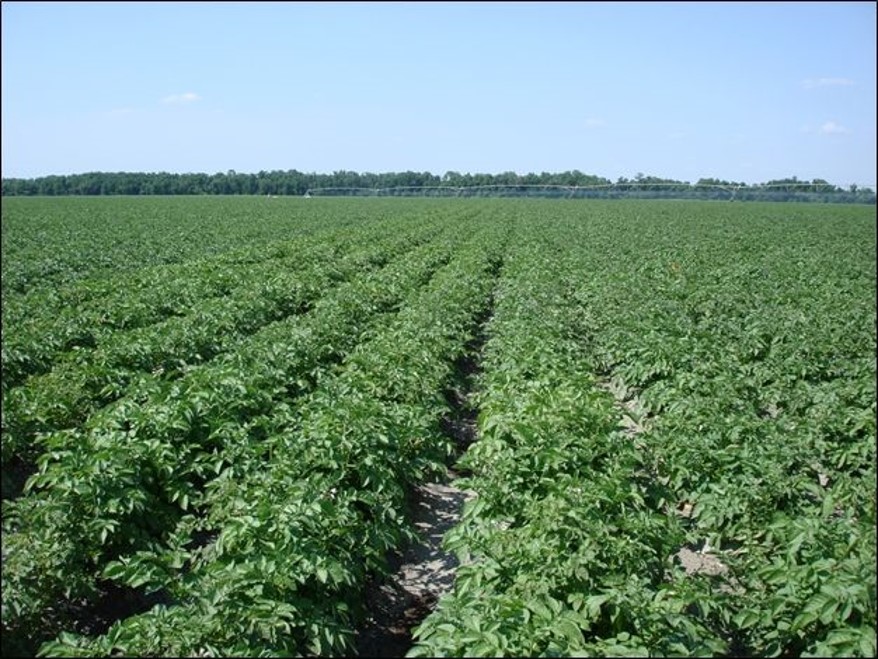By Carrie Harmon (SPDN Co-Director, University of Florida – SPDN)
The Communicator: Volume 5, Issue 7, July 2024

Irrigated Florida potato field; photo George Hochmuth, UF-IFAS Extension
Florida produces two potato crops per year, one in the spring and one in the fall. The value of Florida’s 21,000 acres of potatoes is more than $200M/year (2023 NASS).
In the fall of 2022, a crop consultant submitted a sample with unusual symptoms to the University of Florida Institute of Food and Agricultural Sciences (UF-IFAS) Plant Diagnostic Center lab. The symptoms were spreading fast. The crop scout indicated the foliar disease was present on nearly 100% of the fields scouted and routine fungicide sprays were not helping.

Potato black dot; Photo: C.L. Harmon, UF
The UF-IFAS lab diagnosticians identified the disease as black dot caused by the fungus Colletotrichum, a disease Florida producers weren’t used to seeing. Black dot disease can cause defoliation if left untreated, leading to poor yield.
The UF-IFAS lab diagnosticians tested the isolates for fungicide sensitivity and found that they were insensitive to a common fungicide. Quick response to the consultant changed the course of fungicide applications for the crop, halting disease spread.
Timely educational communications through extension contacts and newsletters ensured all producers in the state were aware of the disease, how to detect it, and how to treat it effectively during a year with especially favorable crop prices.
An experienced scout knew something was unusual and had a trusted lab contact to help with accurate ID. Luckily the lab also was able to test for fungicide insensitivity, all with turnaround quick enough to implement disease management.

